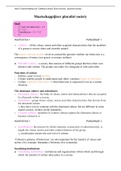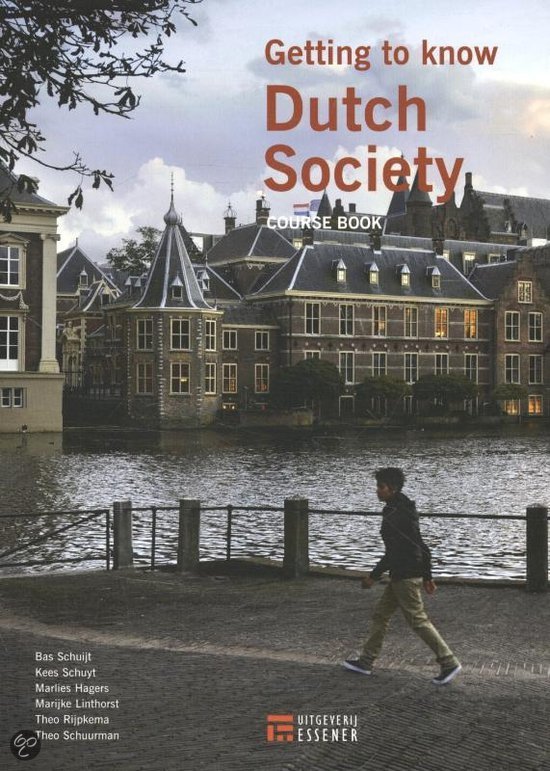Havo 5 Samenvatting van ‘Getting to know Dutch society’, pluralist society
Maatschappijleer pluralist society
Stof:
- 1.1 (niet role behaviour) + 1.2
- 2.1 + 2.2
- 3 introduction + 3.1 + 3.2
- 5.1
HOOFDSTUK 1 PARAGRAAF 1
o Culture – all the values, norms and other acquired characteristics that the members
of a group or society share and consider natural.
The nature-nurture debate revolves around the question whether our behaviour is a
consequence of nature (our genes) or nurture (culture)
o Pluralist society – a society that consists of different groups that have their own
distinct (sub) culture. The groups can either live alongside or with each other.
Functions of culture
- Defines a part of your identity
- Culture enables people to understand each other: common frame of reference.
- Culture regulates behaviour → what behaviour is expected of you in a certain
situation.
The dominant culture and subcultures
o Dominant culture: the body of values, norms and characteristics that are accepted
by all people within a society.
o Subculture: group whose values, norms and other characteristics that deviate from
the dominant culture.
⤷ they have a lot in common with the dominant culture, but are different in some
aspects (music, clothes, moral standards).
o Counter-culture: members of counter cultures oppose the dominant culture or
become a threat to it.
HOOFDSTUK 1 PARAGRAAF 2
o Socialisation: the process by which someone, consciously or subconsciously, is
taught the values, norms and other cultural features of his group.
⤷ socialisation ensures the survival of a culture.
‘Collective patterns of behaviour’ are also important for the transfer of values and
norms. (For example: Ramadan, Christmas, free weekends).
Socialising institutions
o Socialising institutions: institutions and organisations within which and through
which the transfer of culture takes place in a society.
, Havo 5 Samenvatting van ‘Getting to know Dutch society’, pluralist society
⤷ the most important socialising institutions are the communities people belong to:
familiy, school, circle of friends, place of work, sport clubs, government and media
etc.
Socialisation takes place by means of imitation and social control
o Social control: the way in which people encourage or even force others to comply
with the prevailing norms.
Sanctions:
Kinds of sanctions
(Positive)
(Read it as ‘formal positive sanction’, or
informal negative sanction)
(Negative)
Enculturation, acculturation and internalisation
o Enculturation: from birth, you learn the cultural characteristics of your group on
your mother’s knees.
o Acculturation: learning the characteristics of a culture that you weren’t originally
a member of.
o Internalisation: certain aspects of the culture or community you belong to become
so much a part of you that you automatically behave in the way that is expected
from you.
Cultures are not fixed forever and even dominant cultures are constantly changing.
HOOFDSTUK 2 PARAGRAAF 1
Dutch society characteristics (up to 1960)
- Very little social mobility, which means that it was difficult to move up the social
ladder. (big gap between socio-economic classes).
- Society was strongly family oriented
⤷ single people were looked on with pity, women took care of children and didn’t
even have full legal capacity (needed permission to do some things of a man), and
the man was the breadwinner. People’s individual desires weren’t seen as
important.
- There was a strictly hierarchical relationship between people. (Differences in rank
and position were accepted as the norm)
- The Netherlands was a pillarised country: social life was determined by religion
and philosophies of life.






